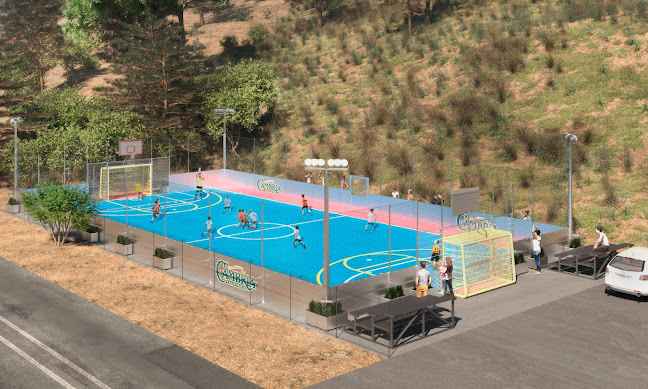Different Types of Futsal Court Size
FIFA has authorized Futsal as the only indoor soccer version. It's played on a firm surface indoors with a smaller, harder ball. The field is comparable to a basketball court in that it has no walls. At any given time, there are five players on the ice, including the goalie. Players can make as many exchanges as they choose, which means they can go all-out for their whole shift before taking a break.
When
you want to play Futsal, then you must have to know about the futsal court size. If you have proper knowledge, then you should play
very well. In this blog, there are some features of futsal court are discussed
below:
Versatility of Game
The
game is fast-paced, and you must be a master of short passes to succeed. Short
passes and give-and-go dominate this game. While getting past players
one-on-one can be helpful, passing combinations up the field result in far more
goals. Because the ball does not bounce and is harder than a typical soccer
ball, it remains near the ground for most of the game until it is shot!
Proper Sanctioning
Futsal Pitch
The
court is typically more significant than a Futsal field, and there are barriers
on both sides of the arena. You can bounce the ball off these walls, giving the
game a new dimension. While the focus of North American indoor is still on
passing, there is a lot of dribbling, especially on the sidelines. Due to the
inability of defenders to force attackers out of limits (due to the walls),
attackers are more inclined to try to dribble past their defenders.
Variations with Indoor Soccer
Indoor
soccer pitches in Europe are essentially the same as those in North America.
The distinction is that a Futsal ball is used in European indoor soccer instead
of a soccer ball. Because the ball is more difficult to dribble, this creates
an unusual dynamic with more passing than in North American indoor soccer. If
you live in Europe, you should try out this version; it's a lot of fun.
Some features of the futsal court
are:
Court Material
Line Marking
Tone marking with lines should be 8 cm broad and white or yellow. Each goal's penalty area is a quarter circle with a radius of 6 meters located on the outside of each goal post. Goals should be 2.0 meters tall and 3.0 meters wide.
Penalty Area
A 6-meter-radius semicircle at each end of the field delimits the area where the goalie can defend him or touch the ball with his hands. In front of the mark, there is also a dot in the center of that line to indicate where the player must score a penalty kick.
Last Words
If
you love the Futsal and soccer game, you should know about the features and
other things of the futsal court size. Some of the features of the futsal court are discussed
above. Stay tuned for more details!





Comments
Post a Comment